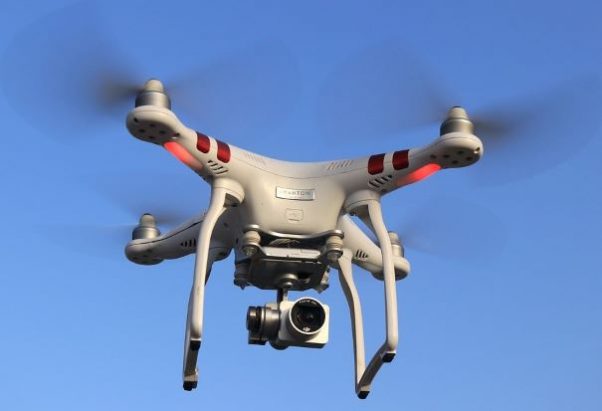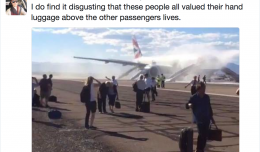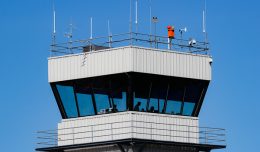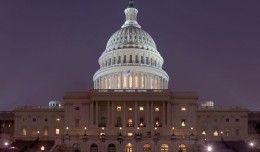Recently, a drone operator near London’s Gatwick airport caused chaos by flying in the vicinity of airline traffic. The result was a 32-hour suspension of flights with diversions for airplanes already airborne and a flurry of media coverage. The public was left wondering how a drone pilot could operate near a major airport, and if something similar could happen here in the United States.
The story of drones, or Unmanned Aerial Systems (UAS) is that of a rapidly expanding technology, the necessarily slow evolution of the legal and regulatory environment surrounding them, and the gaps in safety and society that have resulted.
A decade ago, researchers around the world were experimenting with small multi-rotor electrically powered devices that were capable of maintaining stable flight without human interaction or guidance. Just five years later, quadcopters were in mass production and began flooding the American consumer market. These new drones, seemingly fairly innocuous, were soon flying above major metropolitan areas and near airports at altitudes utilized by the nation’s aviation fleet.
At the same time, digital video cameras became readily affordable, lightweight, and could transmit their feed wirelessly. Drones and other radio controlled model airplanes equipped with these cameras could now be guided deeply into the national airspace system by their remote pilots, who were sometimes miles away. Videos on YouTube, like those from Tushevs Aerials, provided stunning footage, and disturbing evidence that we were now sharing our airspace with these machines and their remote pilots.
In short order, reports of near midair collisions between UAS and aircraft became daily events, with most being concentrated in the major metropolitan areas. For a period lasting more than a year, there was nearly one a day reported in the greater New York City area alone. The concern was elevated when a Cessna on a recreational flight in the San Diego area returned to the airport with quadcopter parts embedded in the wing.
The safety risk was real, both from a midair collision, and to the general public from an errant drone whose operator had lost control. Local law enforcement soon began arresting people, and the FAA, as stewards of the nation’s airspace, began issuing enforcement actions against these new UAS pilots.
The FAA at the time had neither the policy nor the precedent for regulating UAS in the United States. Advisory Circular (AC) 91-57, which was published in 1981, established an informal agreement between the FAA and the radio-controlled (RC) aircraft community, and was only broadly applicable to these new drones. The limited abilities of the RC models, as well as effective self-regulating by local RC groups and chapters, kept the model planes a safe distance away from aircraft operations in the United States. The ability of the new drones, and the ignorance of their remote pilots, fractured the accord. The FAA was left scrambling with a legitimate safety concern, and without guidance or policy.
The FAA’s lawyers prosecuting these new cases consulted with lead FAA attorneys in headquarters, and well as regulatory subject matter experts (SMEs). They concluded that UAS were legally “aircraft,” and the regulations for ultralight aerial vehicles under Part 103, were not applicable. The FAA drafted a policy for enforcement which included counseling for unknowing operators and policy for prosecuting repeat and egregious offenders. When these cases went before the NTSB’s court system, regulatory violations that the FAA was levying against the drone operators under Parts 61 (operator licensing) and 91 (general aircraft operation) were rejected, and many charges were dismissed. The only charge that the court consistently upheld was for flying drones in towered or otherwise controlled airspace (Classes B, C, and D) without permission or clearance.
Sales of quadcopters were not slowing down, and the urgency of FAA action was growing. To establish new policy, the FAA reviewed its own regulations, applicable U.S. Code, and airspace laws that had been established even prior to the Wright Brothers’ first flight. The conclusion was that the FAA did have the right to regulate the flight operations of these machines in most controlled airspace through the established Part 91 regulations. They also determined that the FAA had the right regulate both the pilots and the airworthiness of these drones, but not under the regulations in place at the time. It was also determined that the FAA had little regulatory ability for operations under 400 feet in uncontrolled airspace, and essentially none for operations inside buildings. Drones flown indoors and in netted enclosures were determined to be outside of the FAA’s scope.
Soon after, Part 107 – Small Unmanned Aircraft Systems, established the regulatory framework for certificating remote pilots and regulating their flight operations. Commercial UAS operators also now had a legal foundation to conduct their new line of work, and when in compliance of Part 107, free from FAA prosecution.
The FAA then worked with drone manufactures to provide the consumers with an informational packet that would be included with the sale of each new model, as well as a website that had the correct and most up to date information. With the new informational packets and media coverage of substantial fines for errant drone operators, the number of near collisions with aircraft subsided.
Pilots interested in becoming certified remote pilots will find the study materials and the exam rather easy; the regulations in Part 107 mostly mimic, and are often more simplistic than those in Part 43 (airworthiness/maintenance), Part 61 (pilot certification), and Part 91 (general operating rules).
Though each country has its own specific laws and regulations regarding the operations of these machines, the dominant regulation in the United States is that they cannot be legally operated near airports or above 400 feet without specific authorizations. The regulations for UAS in the United States are found in Part 107 of the FAA’s regulations. Explanations and additional guidance are provided from the FAA’s UAS website.
And if you are a drone pilot, thinking about purchasing or building one for recreational use or commercial photography, or have received one as a gift, I’d encourage you to visit the FAA’s website, faa.gov/uas. It has all the links you need to get started, it is up to date, and it is your one-stop shopping for FAQs, regulatory links, and certification and registration information.







